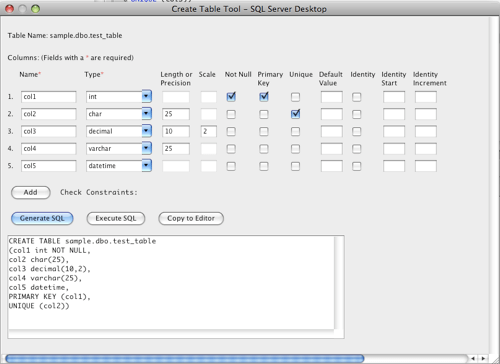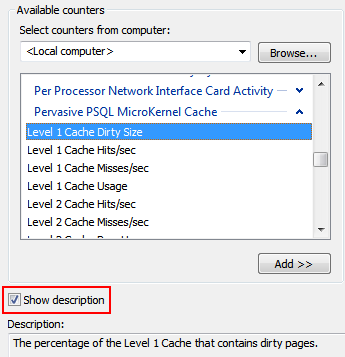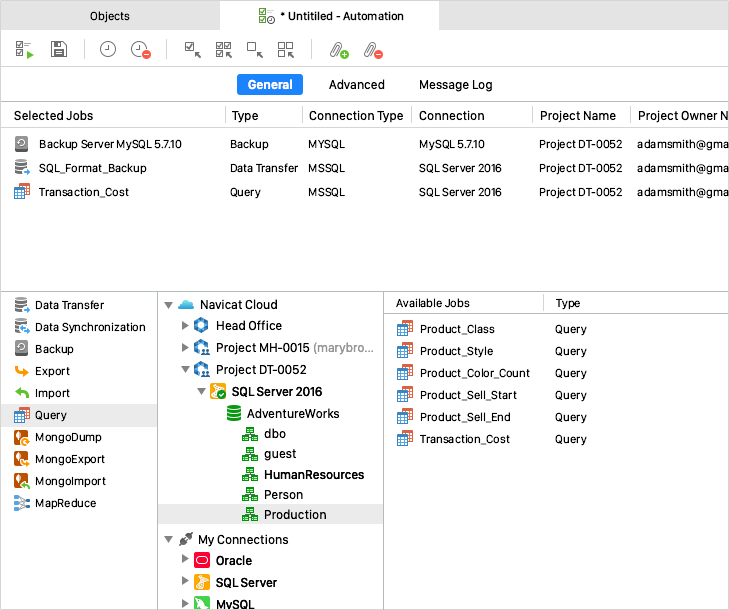

- #PERVASIVE SQL CLIENT FOR MAC MANUAL#
- #PERVASIVE SQL CLIENT FOR MAC SOFTWARE#
- #PERVASIVE SQL CLIENT FOR MAC CODE#
#PERVASIVE SQL CLIENT FOR MAC MANUAL#
#PERVASIVE SQL CLIENT FOR MAC CODE#
Your code should catch exceptions to prevent the application from crashing and to allow displaying a relevant error message to the user. The following is general information on handling exceptions. The SqlException class maps to SQL Server severity. In both cases, a SqlException is generated by the method executing the command.įor information about the warning and informational messages sent by SQL Server, see Database Engine Events and Errors. However, the user can reopen the connection and continue. When the severity level is 20 or greater, the server ordinarily closes the SqlConnection. The SqlConnection remains open when the severity level is 19 or less.

When a level 17, 18, or 19 error occurs, you can continue working, although you might not be able to execute a particular statement.
#PERVASIVE SQL CLIENT FOR MAC SOFTWARE#
Severity levels from 17 through 25 indicate software or hardware errors. Severity levels from 11 through 16 are generated by the user, and can be corrected by the user. Messages that have a severity level of 10 or less are informational and indicate problems caused by mistakes in information that a user has entered. (Client side errors are thrown as standard common language runtime exceptions.) SqlException always contains at least one instance of SqlError.

NET Framework Data Provider for SQL Server encounters an error generated from the server. & "Procedure: " & ex.Errors(i).Procedure & ControlChars.NewLine)Ĭonsole.WriteLine(errorMessages.ToString()) & "Source: " & ex.Errors(i).Source & ControlChars.NewLine _ & "LineNumber: " & ex.Errors(i).LineNumber & ControlChars.NewLine _ & "Message: " & ex.Errors(i).Message & ControlChars.NewLine _ Using connection As New SqlConnection(connectionString)ĭim command As New SqlCommand(queryString, connection)ĮrrorMessages.Append("Index #" & i.ToString() & ControlChars.NewLine _ Public Sub ShowSqlException(ByVal connectionString As String)ĭim queryString As String = "EXECUTE NonExistantStoredProcedure"

"Procedure: " + ex.Errors.Procedure + "\n") Ĭonsole.WriteLine(errorMessages.ToString()) "LineNumber: " + ex.Errors.LineNumber + "\n" + SqlCommand command = new SqlCommand(queryString, connection) įor (int i = 0 i < ex.Errors.Count i++)ĮrrorMessages.Append("Index #" + i + "\n" + Using (SqlConnection connection = new SqlConnection(connectionString)) StringBuilder errorMessages = new StringBuilder() String queryString = "EXECUTE NonExistantStoredProcedure" public static void ShowSqlException(string connectionString) The following example generates a SqlException and then displays the exception.


 0 kommentar(er)
0 kommentar(er)
